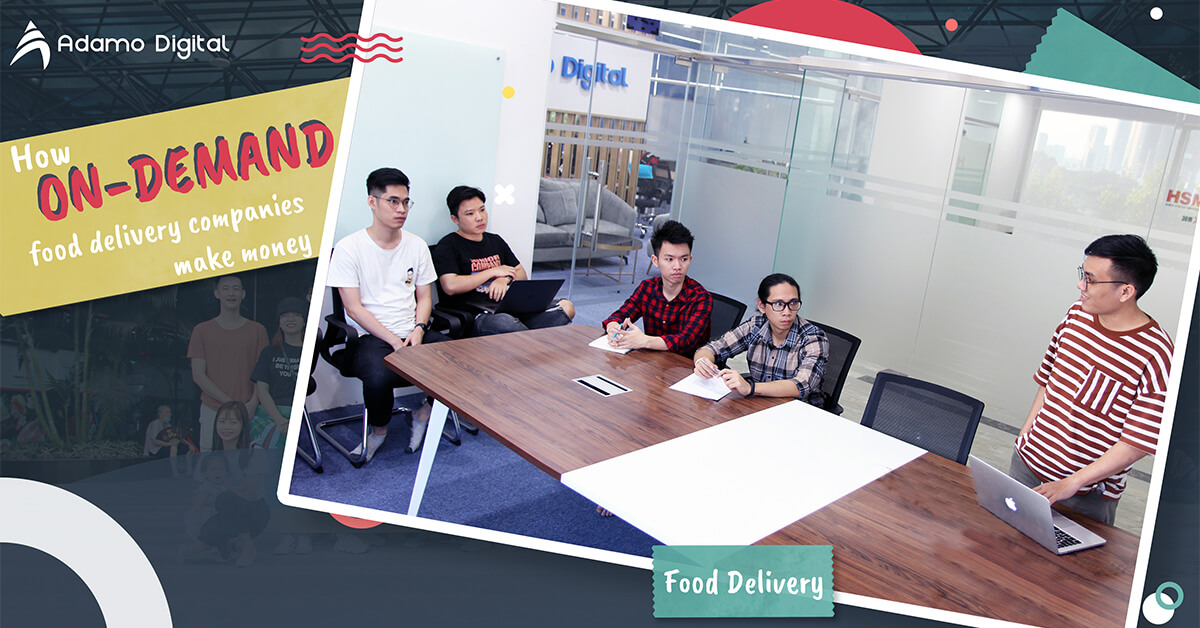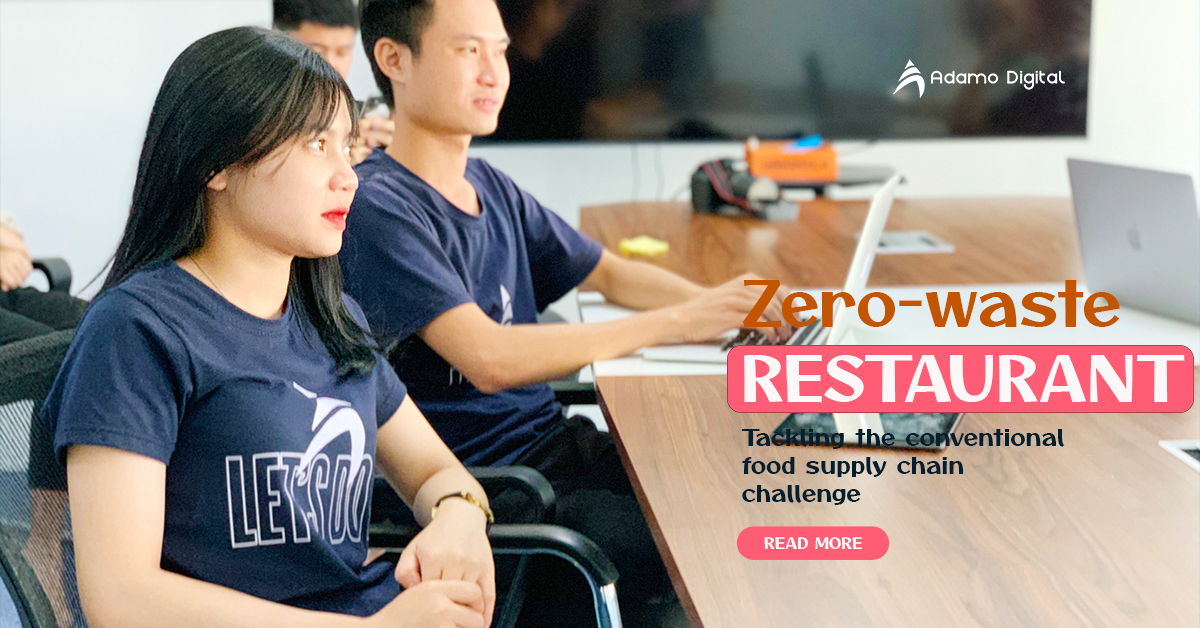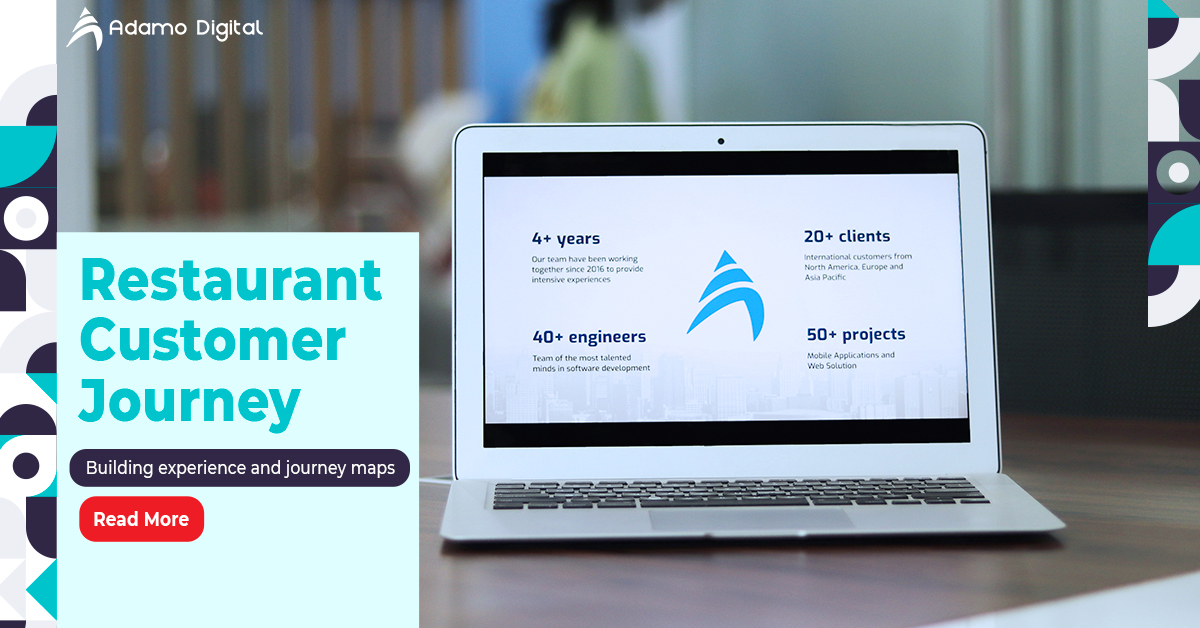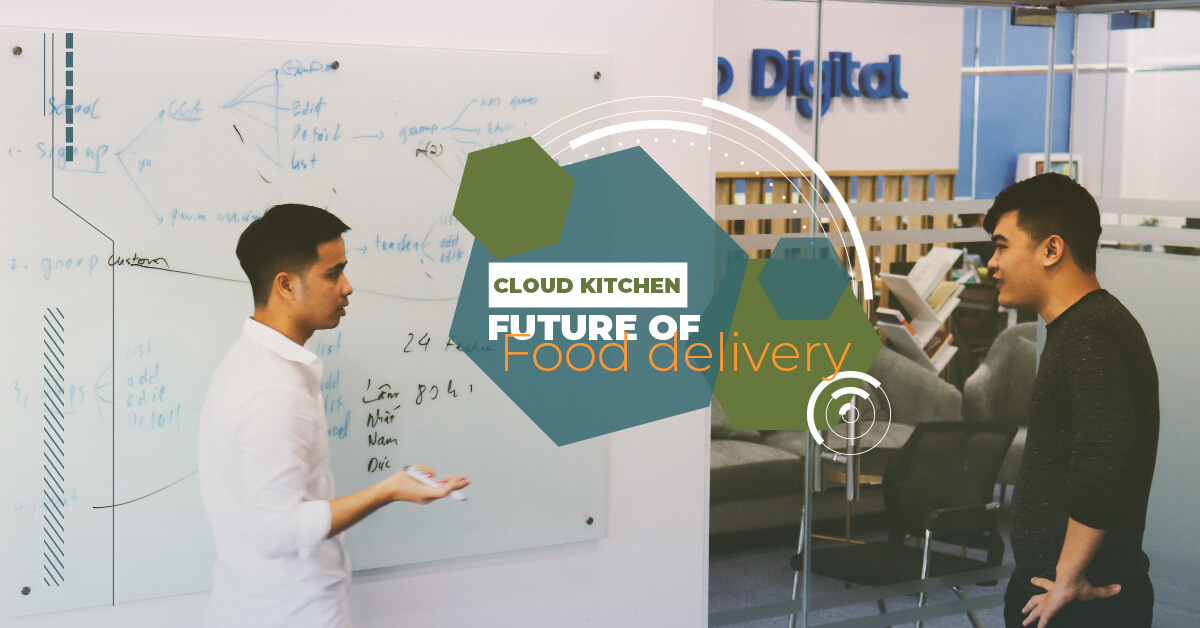
On-demand food delivery companies might not be a particular concept due to a series of startups getting robust growth in a short period. So, let’s explore how they could have a profit.
Along with the outbreak of coronavirus inducing social distancing for disease control. In which, the time people spending at home dramatically increase, leading to the demand for home delivery services on the rise. Industry experts have an optimistic view of the future of food delivery even after the outbreak.
Whereas, the value of on demand delivery service is expected to surpass US$ 365 by 2030. As a software development company, Adamo experiences the surge of requests regarding on demand food delivery app development during the raging epidemic.
Undoubtedly, the booming of on demand delivery apps satisfies both customers, restaurants, and meal prep companies. While customers would afford exactly the restaurant items at 10-20% off prices, food providers could leverage the app traffic to handily raise the sale volume without putting tremendous effort into marketing and promotion.
Many people are misleading that the food delivery company only charge the delivery fee. However, you might witness that majority of on demand delivery startups offers enormous free delivery recently but still have profit. It is due to they run simultaneously several models under some hidden costs you will know in this article.
Explore pricing models of on-demand food delivery companies with billing element
You can explore parts of the pricing models via your billing components. Basically, there are five fundamental pricing elements, listed in a food delivery bill.
| Real value of Food | The actual prices of ordered foods |
| Services fee | A fee supporting delivery platform providers maintaining their infrastructure. |
| Delivery charge | Original fees for obtaining delivery services. |
| Taxes | The tax amount is imposed depending on local laws and regulations. |
| Tip | Users might tip to drivers to express their satisfaction. |
Four key profit strategies of a typical on-demand food delivery app
The revenue of a food delivery business might come from several sources. You can witness a majority of on-demand delivery services in the EU, Asia, and America run free ship campaigns. In which, the delivery fee would be subtracted when users order over a certain amount. However, the delivery platform still makes a profit due to four regular incomes below.
Charge delivery
The on demand delivery platform allow restaurants, which do not have their own couriers, to sell the food to customers and leave the delivery tasks to the platform. In this case, the billing will separate into two components, which are food charge to the restaurant and delivery belonging to the food delivery company.
In other words, when a customer places an order via a platform. Then, an executed shipper would take responsible for collect the food from sellers, then deliver it to the customer’s address. Customers will pay the price to get its pickup service that the service fee basically depends on the shipping distance. Expressly, if one customer orders in different restaurants, the shipping dee will not be higher.
Both bill amounts will directly send to the food delivery app’s account that restaurants will get paid later. It explains why the revenue of on demand food delivery companies might high, but the Return on Sales (ROS) tends to be lower. Actually, business delivery on delivery charges is seemingly brought stable income to the delivery company. Unfortunately, it limits future growth opportunities.
Margin cost per order
As an intermediary, the food delivery company can charge the commission fee or margin cost since customers and restaurants are benefiting from using the platform. If meal prep companies sell more food because of support from the food delivery platform, they need to share those profits. In most cases, customers do not clear notice the margin cost since restaurants will pay it. However, they might raise the food price by some percent to compensate for the loss.
Commonly, food delivery companies will charge a margin cost per each successful order, which is directly subtracted in restaurants’ income. In practice, depending on the revenue level of the restaurants, the platform will set the commission rate. In which, high revenue restaurants enjoy some discounts since they are key clients. Alternatively, some platforms also charge a monthly fee for sign-up members to start selling foods.
Also read: Cloud kitchen concept: future of on demand food delivery
Premium services of on-demand food delivery companies
If you want fast-delivery, priority delivery, rush-hour delivery, or any other premiere services, you might pay an extra to the on demand food delivery company. For many delivery giants, their network of couriers is wide, that it can afford deliveries in up to 15 minutes. As a result, they might charge customers who are interested in premiere services.
On the other hand, several delivery companies charge dinners a fixed price to access their extra services, which is commonly known as membership fee. In which, customers could receive compensation for any negative experiences regarding delivery services, food qualities, or other risks. Otherwise, premium members could get priority right in case of excess demands.
Host promotion and advertising campaign
On-demand food delivery companies charge sellers an advertising fee in exchange for banner advertisements promoting their restaurants on the platform.
Act as a social community, on-demand food delivery apps frequently host several promotional campaigns, which help restaurants attracting more impressions and orders. In practice, there are three types of in-app advertising
_ Selling top listing: in this case, food providers pay a certain amount to on-demand food delivery apps in exchange with appeared in the top search. For specified search queries of users, sponsored foods, or restaurants will be displayed above or between organic results. It seems like search ads from many search engines like Google or Bing.
_ Banner ads: delivery apps can charge restaurants for promotion at the banners in the app home screen. In which, they get to approach more users when they open the apps.
_ Promotion campaign: to attract customers, most delivery apps run promotions frequently that collaborating with restaurants to offer discounts, vouchers, free trials, and more. In each campaign, restaurants which browse for more brand awareness, need to reduce the profits and pay a commission to the apps.
In conclusion, on-demand food delivery businesses refer to the current and future of the busy world due to its convenience. In fact, diversifying the business models might result in maximizing potential profits sustainably. In which, knowing how other making money help you do your business better. In particular, the four strategies above are only fundamental for the outstanding on-demand delivery apps need more complex profit pattern to lead the market.











